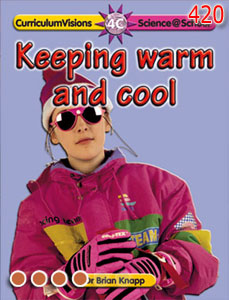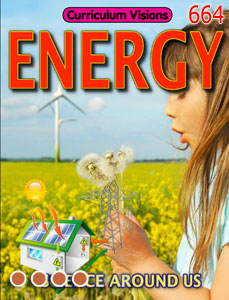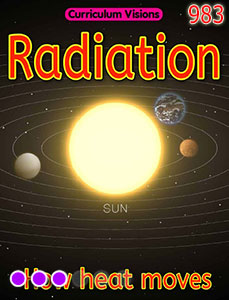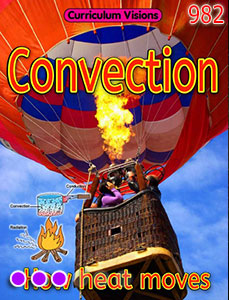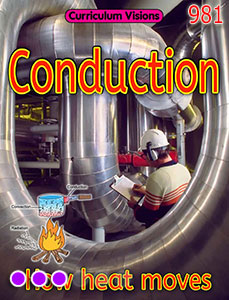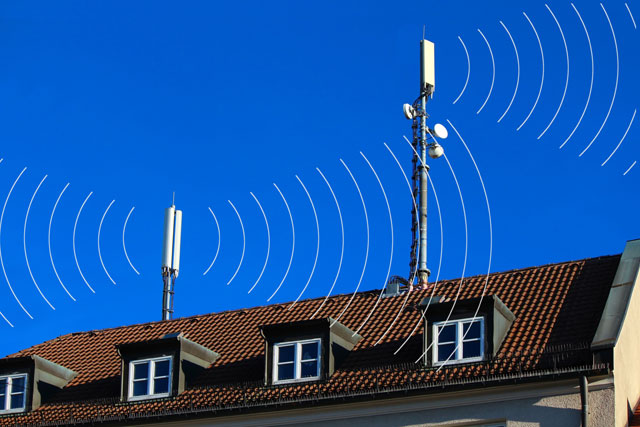There are three ways of sharing energy. You can touch one thing with another, for example place a hot rod against a cool one to warm up the cool one. That is called conduction. You can share energy by letting warm liquids or gases rise. That is called convection. And you can send energy through space or the air. That is called radiation.
A radiometer shows the idea of radiation very well. It is a small 'toy' with four paddles pivoted inside a glass bulb. There is no air in the bulb. One side of each paddle is painted white, the other side black.
When the sun shines, the black side of the paddle soaks up heat (energy). The white side of the paddle bounces heat (energy) away. The difference between the two is enough to make the paddles spin.
The brighter the sunshine, the more the radiation energy, the faster the paddles move. Notice that this happens through glass and in a bulb with no air, showing that radiation moved through transparent materials and does not need air to help transfer energy. You would know that anyway, because the heat you feel from sunshine has reached us through space, and there is no air in space.
It is not just heat energy that can be radiated. Waves of all kind can be radiated: television waves and radio waves are common ones.
